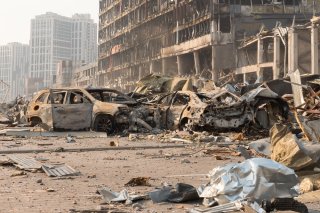Will the Ukraine War End?
Hostilities or no hostilities, the violence of the Ukraine War will live on long after any potential “peace” deal.
President John F. Kennedy famously quipped, “Too often we enjoy the comfort of opinion, without the discomfort of thought.” The same idea describes the current thinking about the end of Russia’s war in Ukraine. This is because the very question is premised on a comforting assumption that there will be an end to a long and costly war and that peace in Ukraine and Europe will naturally follow the war’s termination.
This view reflects a narrow perspective on war as a time-bound, discrete event with a clear beginning and an end. Although highly popular, this perspective is both limited and misleading.
Regardless of Ukraine’s ability to regain every inch of its territory, Russia may never surrender. Furthermore, Moscow is likely to retain the will and capacity to threaten Kyiv, not least because this war has been fueled by Russia’s imperial ideology that denies Ukraine its history, national identity, and statehood. Neither a negotiated cease-fire nor a peace deal will erase the carnage of indiscriminate aerial attacks and atrocities of the Russian army in the collective memory of the Ukrainian people. These traumatic experiences, in turn, will shape the perception of Russia as an eternal enemy of Kyiv.
More importantly, wartime violence never ends with the cessation of wartime hostilities. The so-called “negative peace” that ends armed conflict rarely translates into the “positive peace” characterized by security for all people. Ukraine and the rest of the world will continue grappling with violence on multiple fronts. First, societal violence tends to increase after the end of a war when traumatized combatants return from the frontlines to their homes. Second, the deadly artifacts of war continue maiming and killing people (Ukraine today is the most heavily mined state of the world, with large swaths of its territory peppered with artillery shells and ammunition). Third, the concentration and free circulation of arms in war leads to the proliferation of weapons that often end up in the hands of violent non-state actors within and beyond the combatant nations. Fourth, the war has created more deadly weapons that will appear in future arms sales and violent conflict.
While the view that wars don’t end but transform into other forms of violence is discomforting, it is more realistic. It points out the broader ramifications of wars and calibrates our expectations. Importantly, it prevents us from getting complacent that Kyiv’s decisive victory on the battlefield will remove all threats to Ukraine’s sovereignty, democracy, and independence.
Dr. Mariya Y. Omelicheva is a Professor of Strategy at the National War College, National Defense University.
Image: Oleksii Synelnykov / Shutterstock.

